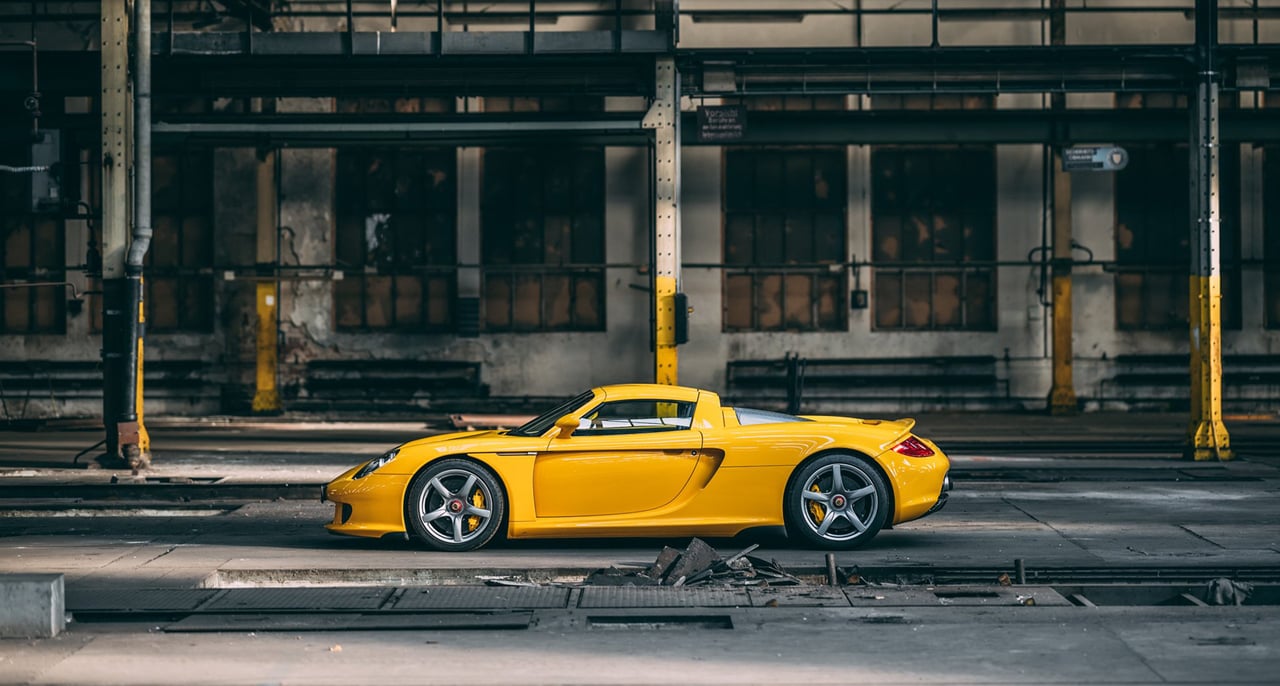
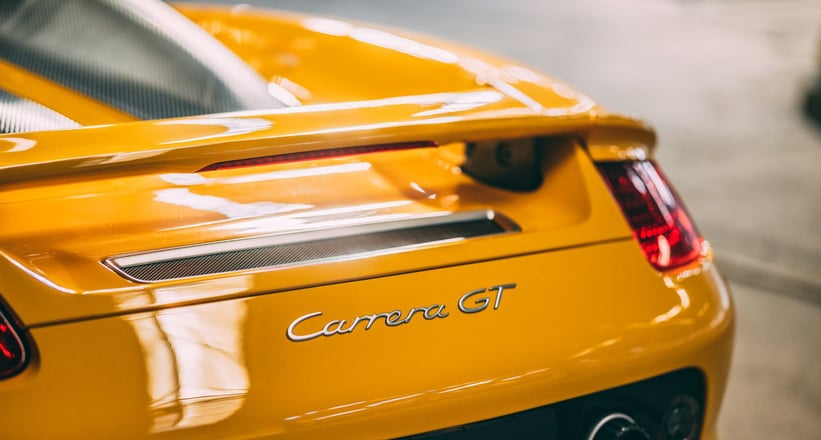

Designers abhor a vacuum. Show one an empty surface and chances are a graphic or feature will soon appear. This ever-increasing busyness is emblematic of an industry so keen to entertain, and in no sector is this more apparent than the realm of the supercar. Amid such visual noise, Porsche’s repose rests on what is left unsaid.

Such humility might be understood with a 356, yet the Carrera GT remains hyperbole-free despite the inclusion of a V10. Part of this restraint comes from the lengthy ratio between wheels and body. Yet the gentle rooster-tail of the rear wing prevents the bodyside ever feeling distended.

Far from feeling under-wheeled, the Carrera GT is breath-taking in its proportions: a car so low, a wheel-base so long, and a deck the size of an air-craft carrier lends the car unique presence. No other car prepares you for the sheer expanse of metal (or in this case, carbon fibre) spilling before you as you reach for the door.

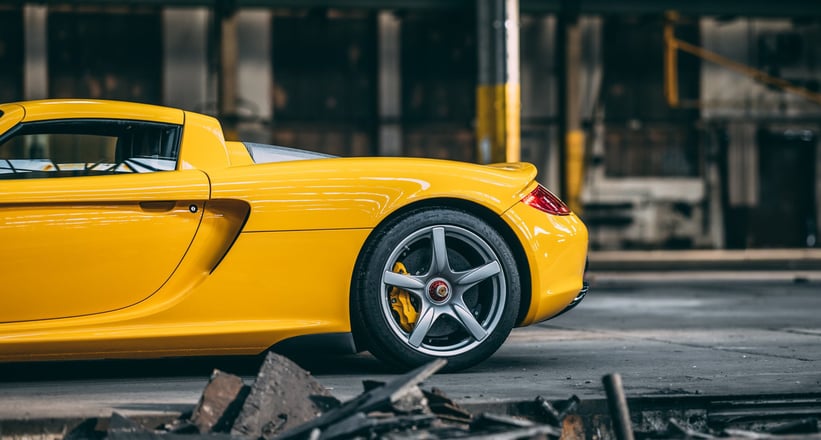

Barely interrupted by the compact cabin shunted forwards, a torrent of surfaces pour over the car and under the rear spoiler. The latter was a feature coincidentally shared by the 2000 BMW Z9 convertible concept, the same year as the Carrera GT concept. Other show car details abound: the wooden gearshift recalls the 917, and a floating front wing tucking behind it the tight wrap of the doors. Behind them, a single cut-line slices the surface like the tip of an épée.



If there is a recipe for brand and design strategy, it goes something like this: identify a former model as a brand’s point of origin, reinterpret said model for current day, and replicate characteristics as ‘icons’ across the rest of the range. Porsche has largely been spared this soul-searching of other brands thanks to the 911.
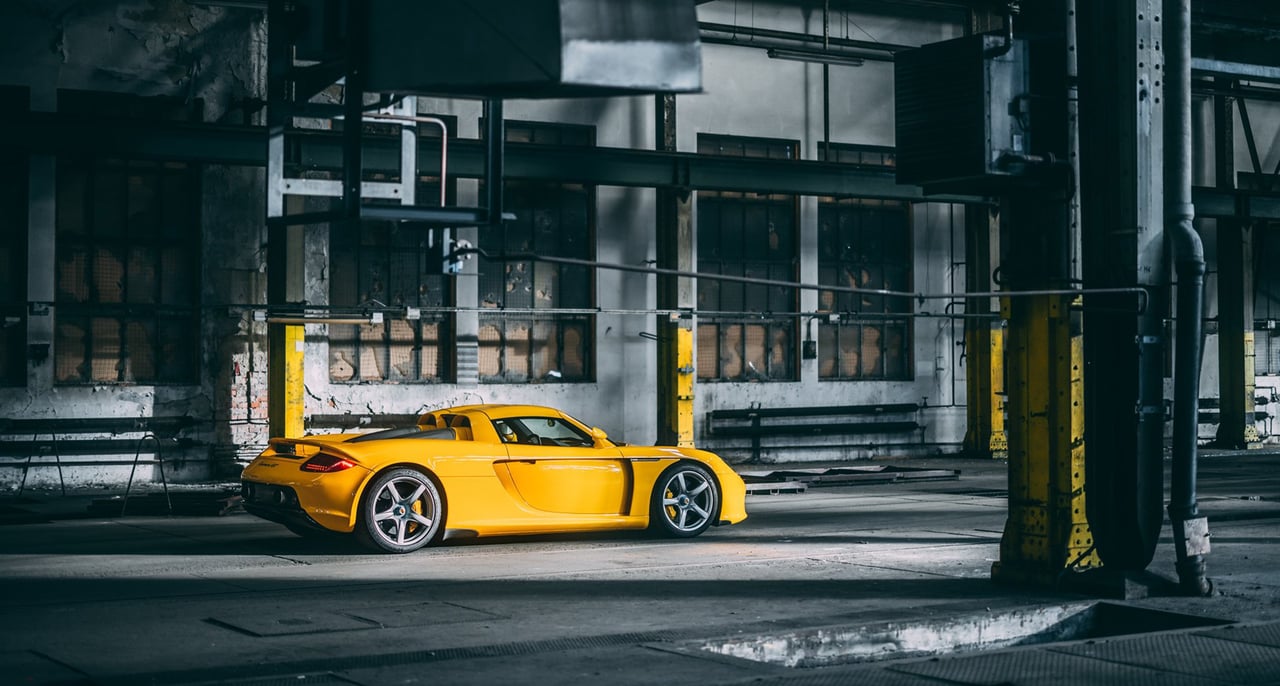
Over the past 20 years, the successful replication of 911 cues has made alternative body-styles marketable. The benefits are twofold: it channels the aspirations of different user groups, and it creates a pipeline for them to grow into more expensive products. The downside is that it inhibits divergence.
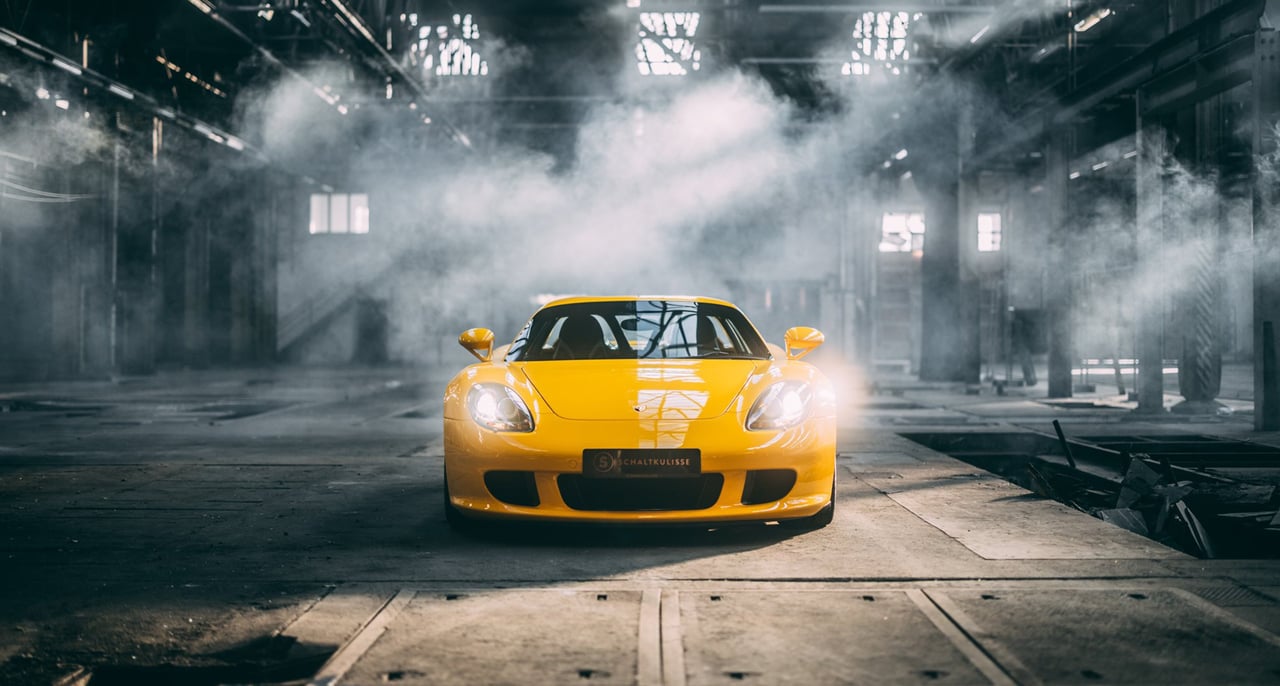
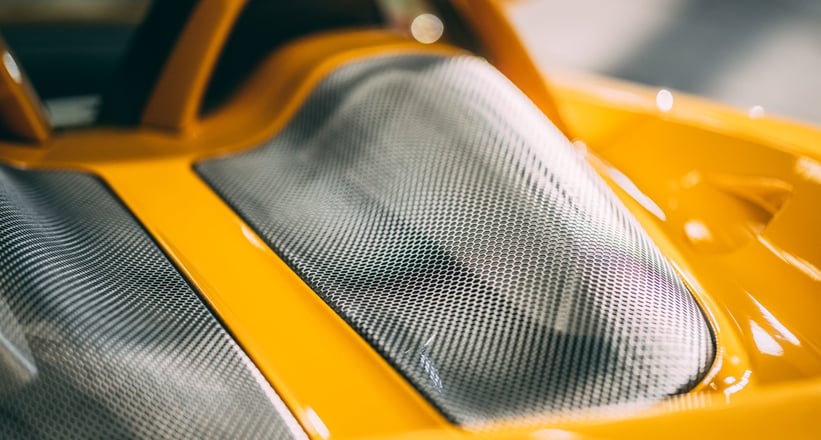
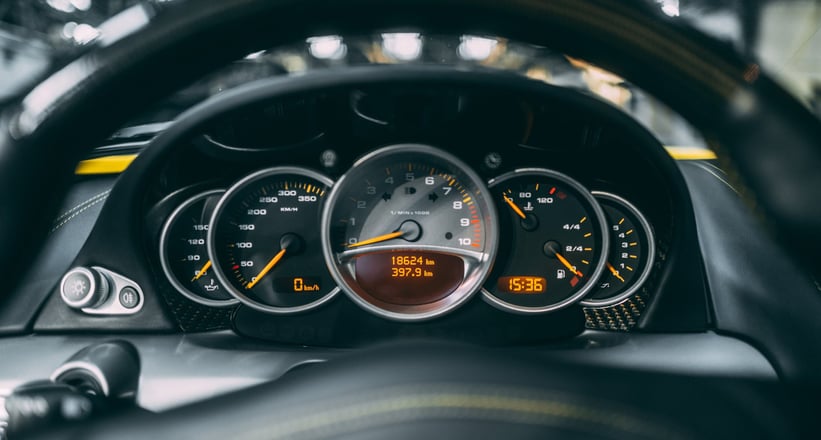
The Carrera GT stands apart from this strategic mapping. There is no coke-bottle here or full-width rear lamps, nor curling window graphic nestled in the C-pillar. It bears instead the clear-sighted confidence of a design that stands above the jostling of other models in the Porsche range. Unmistakable references to cars such as the 904 do nothing to detract from the Carrera GT’s aesthetic volition. In circumventing the design language of the 911, the Carrera GT has become something greater: a car with its own voice.
Find examples such as this stunning Carrera GT for sale with Schaltkulisse and others in the Classic Driver Market!
Photos by Stephan Bauer





















